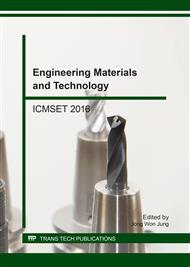p.459
p.465
p.471
p.477
p.481
p.488
p.494
p.500
p.505
Dynamic Characteristics Analysis of Long-Span Cable-Stayed Bridge with Steel Truss Stiffening Girder
Abstract:
With the development of transportation, more and more long-span floating system steel truss-stiffened cable-stayed bridges have been built. Due to the non-restraint in longitudinal direction, this kind of bridges possess very superior performance in the dissipation of vibration energy. On account of the characteristics above, the paper intends to discuss the dynamic behavior of this type of bridges. Based on a real structure design, the numerical simulation procedure of the vibration has been introduced. According to a series of assumptions, the dynamic 3D FEM model of the bridge is established firstly. Thereafter, the vibration characteristics of the model are evaluated. Results show that the longitudinal stiffness is relatively small in comparison to the torsional stiffness. The 1st order mode is longitudinal floatation of girders and pylons. But overall the bridge is still rather flexible.
Info:
Periodical:
Pages:
481-487
Citation:
Online since:
June 2017
Price:
Сopyright:
© 2017 Trans Tech Publications Ltd. All Rights Reserved
Share:
Citation:


